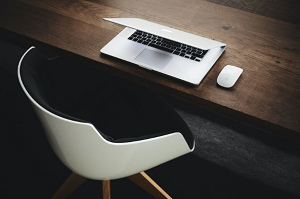9 Reasons Why MacBook Charger Is Overheating
MacBook chargers can become dangerously hot when they’re in use, potentially leading to serious injury or even a fire.
In rare instances, a faulty charger could also make the computer freeze. Questioning how to unfreeze a Mac and missing the defective hardware or accessory part is a thing.
But why can the charger overheat? There are several underlying factors that could be causing your MacBook charger to heat up, and understanding these causes is essential for protecting yourself and your device from harm.
1. Corrosion Damage
Corrosion damage could trigger an overheated charger. The damage might be caused by contact with chemical agents that spoiled themselves onto the casing.
It could also be the result of faulty wiring, especially if the internal setup was messed up from the get-go.
2. Overuse
Constant overuse of your MacBook charger can lead to it becoming hot due to the amount of power it has to draw while providing power to your device.
This can cause excessive heating, with temperatures reaching up to 120 degrees Fahrenheit or more if left running for too long.
To avoid overloading your charger, make sure you unplug it when not in use and try not to use other electronic devices while charging the Macbook.
3. Defective Charger
You may have a defective MacBook charger that is not designed properly or has been damaged somehow.
Faulty chargers are normally marked by their inability to provide the correct output current and voltage needed for charging the device, resulting in overheating and eventual failure.
If you suspect a defective charger, get it replaced immediately.
4. Improper cables
Another possible reason for a heated-up laptop charger can be an incompatible cable between the wall adapter and the computer itself.
Using third-party cables instead of only ones supplied by Apple could potentially lead to complications such as less efficient charging due to lower current flow rate along with increased heating up of both components.
Make sure you always use original Apple-certified cables when possible.
5. Poor Ventilation
Suppose you’re using your Macbook on a desk where there is little room for proper ventilation around the sides and back of the charger.
In that case, there could be a lack of air circulation which leads to trapped heat inside the unit and ending in higher temperatures during use than usual.
Place your Macbook on surfaces with plenty of air space around them so that enough airflow is achieved during charging sessions, or consider investing in laptop coolers to help further reduce the risk for these configurations.
6. Foreign Objects Inside
It’s possible that foreign objects, such as dust particles, have managed to find their way into the unit, which prevents free airflow from happening, thus resulting in trapped heat buildup inside its interior walls.
The buildup leads to higher than normal operating temperatures on its exterior surface area once switched on and used for longer periods of time continuously without rest breaks given at regular intervals.
7. Aging Parts:
As with any electronic component, wearing down parts will eventually occur with constant use over time if not replaced regularly as per manufacturer instructions provided.
Unfortunately, in the case of MacBooks, computers are not as flexible when it comes to hardware replacements. On the other hand, we are not talking about that big of an internal hardware aspect here.
Check what you can replace and try to do that. It might cost money, but it is much cheaper to eliminate the overheating charger problem as soon as possible. Otherwise, you will have to pay even more.
8. Incorrect Voltage/Amperage Ratings
It’s possible that either voltage or amperage was used incorrectly when replacing parts such as power cords or adapters inside the unit.
This results in incorrect current being pulled by the affected component, thus switching off safety features installed and designed specifically to prevent overheating dangers occurring due to wrong current levels entering the system.
Incorrect voltage and amperage put users at greater risk should the problem remain unresolved after figuring it out.
9. Wrong Plug Type Used
Using the wrong plug type when connecting the unit to the electric socket means a voltage mismatch occurs, leading again to an imbalance created between what’s required versus what’s actually available.
The mismatch increases the chances of the heater element malfunctioning due to an incorrect setting being applied. If you are not well-versed in electricity, find someone who can help you figure this stuff out.

How about when both the charger and macOs laptop get abnormally warm or hot?
There’s no single answer to your question Luis. It’ll be a process of elimination one by one. There could be poor ventilation due to dust build up on the fans, poor ventilation on the air intakes etc.
Could the battery induces the overheat of the conector ?